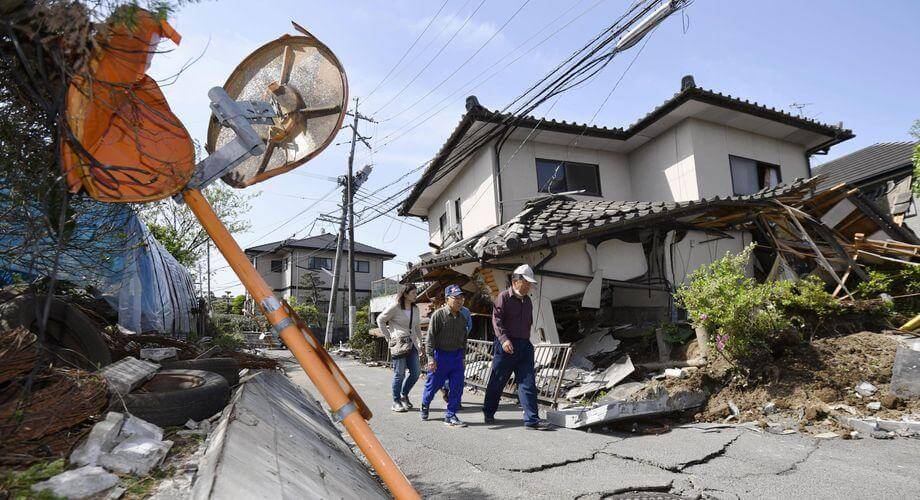What Other Emergencies Are Possible In Your Area?
The best way to prepare for whatever specific emergencies you may be susceptible to is to research a little bit about your area. To do this, look up what disasters have happened in your city and surrounding areas in the past, and then look up what may happen in your area based on the experts. In addition, you will want to consider and prepare for emergencies that can happen in any area, such as an active shooter, a home fire, and household chemical emergencies and more.How Do I Begin to Plan For More Potential Disasters?
First, research the most likely emergencies in your area. Second, rank them based on the likelihood of them happening. Third, under each emergency category, create a plan specific for the disaster. For each of these plans, consider what financial, physical, and emotional losses these could bring and plan accordingly. As you carefully sort through possibilities, you will be better prepared when the moment of stress and emergency actually comes. Even mentally running through an event once will help you react more intentionally and with less panic. Below is a list of the most possible disasters for which you should consider preparing. Instead of letting this list overwhelm you, simply pick a few that seem most likely, think through them, create a plan, and work from there.POTENTIAL EMERGENCIES
Although we can’t walk through each of these emergencies, some of the most commonly occurring emergencies are discussed below. According to Ready.gov, you should prepare for the following:ACTIVE SHOOTER
If you come in contact with an active shooter, you want to 1. run, 2. hide, or 3. fight. Running away is your safest bet. Before anything else, you want to get away from the shooter if possible, leaving behind any belongings. Call 911 as soon as you are safe. If running is not possible, hide. Get out of the shooter’s view, and keep quiet. Remember to silence your electronics, lock and block doors, and hide with only yourself or one other person If these two options are not possible, you will need to fight. Create a plan with others to ambush or distract the shooter, and be prepared to cause severe or lethal injury to the shooter.CHEMICAL EMERGENCIES
A chemical attack is the release of a poisonous vapor, aerosol, liquid, or solid that has a toxic effect on people, animals, or plants. An attack of this kind could come without warning. People may react to a chemical attack by experiencing difficulty breathing, eye irritation, loss of coordination, nausea, or burning in the nose, throat, and lungs. In addition, if you see a group of dead insects of birds, this also may be indicative of a chemical emergency. To prepare for an emergency of this kind, you will want to build an emergency supply kit including duct tape, scissors, and plastic to cover doors, windows, and vents. In addition, you will want to create a family emergency plan that outlines what you will do in a chemical emergency and where you will meet. After you have a sense that you may be in a chemical attack, try quickly to find where the chemical is coming from, and take immediate action to get away from that source. Get out of the building or area and avoid contaminated areas, if possible. If you are not able to do this, you will want to move as far away from the source and immediately shelter in place. In order to shelter in place, close all doors and windows. Turn off ventilation, and seal the room in which you are sheltering with duct tape and plastic sheeting. In addition, turn off ventilation that could potentially cycle contaminated air to you. Listen to the radio for when you are clear to exit the building and contact medical professionals quickly when it is free to exit.
EARTHQUAKES
Earthquakes are one of the most common types of natural disasters. Your number one goal in the case of an earthquake is to protect yourself. Do not run outside or stand in a doorway. Instead, if you are in bed, turn over, face down, and cover your head and neck with a pillow. If you are driving, pull to the side of the road. If you are outdoors, stay away from buildings. The three basic steps to remember for keeping safe during an earthquake is to 1. stop, 2. drop, and 3. hold on. Try to burrow under a table or desk if possible, and hold onto whatever you are hiding underneath.HOME FIRES
Since fires spread surprisingly quickly and are incredibly deadly, acting immediately in the case of a home fire is critical. Make sure that the fire alarms in your house are functioning and up-to-date. Create a plan with your family on what to do in the case of a home fire and practice it twice per year to ensure that all of you are prepared. In the case of a fire, drop to the ground and army crawl under the smoke. Touch the door and doorknob lightly before opening it. If it is hot, use another exit, if possible. If you choose to open a door, do so slowly and carefully. If you are unable to get to someone needing assistance, or you have a pet trapped in the home, tell the fire department immediately once outside instead of going after the person or pet yourself. If your clothing catches fire, stop, drop, and roll.POWER OUTAGE
Chances are, you will experience a few power outages in your life. As a few basic tips, keep your refrigerator and freezer closed except to get the necessary food, as this will save energy and keep the food cool. Use generators outdoors and away from windows, and disconnect appliances to avoid damage from electrical surges. Try to have a few things in place before the power outage, such as a generator, battery-operated flashlights, and battery-operated medical devices.SNOW STORMS & EXTREME COLD
Most everyone will experience a snowstorm at some point in their lives. The most important things to remember during snowstorms or extremely cold weather are to stay off the roads if possible and keep warm and dry. Having protective gear to keep warm is essential during extremely cold weather. You will want to keep dry at all costs, by wearing waterproof clothing and changing quickly when you do get wet. You will want to stay indoors if possible. If you do have to drive, drive slowly and carefully. Put your car into 4-wheel drive and put chains on your tires to lower your risk of sliding on the icy roads.THUNDERSTORMS & LIGHTNING
When you hear thunder, go inside, as a general rule. Unplug appliances during a thunder and lightning storm, and avoid using landlines or turning on running water. If you are unable to reach a sturdy building, take shelter in a sturdy car, but avoid touching any metal. Immediately evacuate any pool or other body of water if you are swimming or boating, and find a building or a car under which to find shelter.CONCLUSION
Being prepared for what emergencies are most likely to happen in your lifetime can be the difference between life and death. Keeping up-to-date on your emergency preparedness plans as an individual and a family is a critical component of any preparedness scenario. Aside from the previously scenarios, here is the rest of potential disasters we should prepare for. This list is given to us by Ready.gov.- Attacks in public places
- Avalanche
- Bioterrorism
- Cybersecurity
- Drought
- Explosions
- Extreme heat
- Floods
- Hazardous material incidents
- Household chemical emergencies
- Hurricanes
- Landslides & debris flow
- Nuclear explosion
- Pandemic
- Radiological dispersion device
- Severe weather
- Space weather
- Tornadoes
- Tsunamis
- Volcanoes
- Wildfires
Related posts:
How Can I Develop a Family Emergency Plan?
Understanding The Earthquake Risks in Your Area
How Do I Write An Emergency Disaster Plan?
How Do I Prepare For an Earthquake?
What I Wish I'd Known Before The Coronavirus
4 of The Most Common Earthquake Myths
How do I prepare for a pandemic outbreak?
What Documents Should I Have On Hand In Case Of An Emergency?

